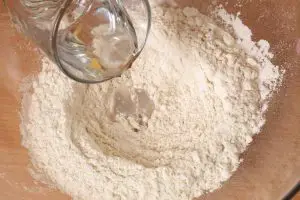Fresh home-made bread is always mouth-watering – a delicacy straight out of heaven. For most of us, the aroma of freshly baked bread reminds us of our childhood, when we reminisce about our memories. Baking a loaf of bread using a bread maker has many benefits but how does a bread maker actually work?
You always have the freedom to personalize the dough according to your taste. You can even control the amount of sugar added into it or, perhaps, add a completely new flavor like vanilla, chocolate, or banana.
If you want, you can go completely organic with your bread. You don’t need to add any artificial flavoring or ingredient to enhance the flavors.
Without a doubt, making bread takes a lot of time. The dry and liquid ingredients need to be mixed separately and then carefully blended together. But, the unique taste and compliments from friends and family are worth the effort.
We know that bread-making is no easy feat. But, let’s see what actually goes into making this delicacy.
The Dry Ingredients
As the name suggests, we will mix all the dry ingredients, including yeast, flour, and sugar.
Addition of liquid Ingredients
Once the dry element is ready, the liquid ingredients are added into the mixture. This step is extremely crucial because the wrong amount of water, oil, and milk can make the mixture either too lumpy. If this process goes wrong, you’ll have to say good-bye to your bread-making dreams.
Dough Kneading
After you’ve made the dough, cover it and put it aside for about 2 hours. By this time, the dough will have risen significantly, thanks to yeast doing its magic.
Once the dough has risen enough, it becomes your punching bag. By punching the dough, you’re actually removing excess air from it. After punching, comes kneading. Turn that dough into a smooth ball-like shape.
Baking
We will transfer the dough to a bread pan and ship to the bread maker for the baking process to begin.
The Science of a Bread Maker
Before using an appliance, its best to know about it first.
A bread-maker is a compact microwave-like machine that mostly comes with one bread tin. However, due to technological advancements, bread makers of different sizes, shapes, capacity, and colors are available in the market.
The bread tin, which gives the bread its unique rectangular shape, usually comes with a bread-maker and is removable.
Like most people, if you haven’t seen a bread-maker, just imagine that your home oven has shrunken to 1/10th of its original size. A bread-maker has an electric coil attached to its bottom surface. Electric rods are embedded in the sides, depending on the model providing heat evenly to the bread loaf.
For your ease, most bread makers now come with a glass window, which allows you to witness the bread inflate and rise-up – truly a magical moment!
New bread-makers are now coming with timers, which stop working automatically once the timer stops. Another exciting feature of many modern bread-makers is that they are embedded with memory chips that store data from your past bread-making experiences.
It seems that just as chefs innovate with their dishes, scientists also love to add more and more features to their inventions, bread-makers included. Bread machines, such as Zojirushi, can be timed as well. And you know what’s interesting? This machine works without making a noise, it won’t wake you up in the middle of the night to tell you that your bread is ready.






